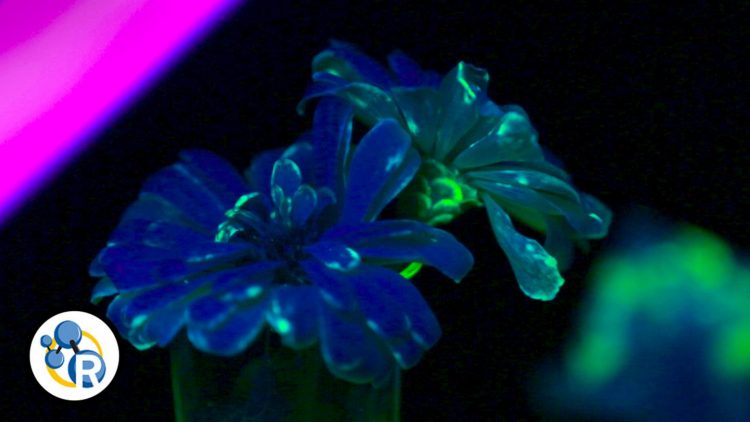How to grow a glowing flower: The chemistry of fluorescence (video)

If you have ever seen objects 'glow' under a black light, you're familiar with fluorescence. But have you ever wondered why some materials fluoresce while others don't? Reactions explains how fluorescence works, along with its importance for applications in forensics, medicine and nanotech. It's all here in these videos: How To Grow A Fluorescent Flower: https://youtu.be/c3VVUsuowNM Fluorescence Is Awesome (Here Is How It Works): https://youtu.be/FZ9E5hZMbCA Credit: The American Chemical Society
Reactions explains how fluorescence works, along with its importance for applications in forensics, medicine and nanotech. This week, we're also throwing in a bonus video on how to grow a fluorescent flower for that special someone. It's all here in these videos:
How To Grow A Fluorescent Flower: https:/
Fluorescence Is Awesome (Here Is How It Works): https:/
###
Subscribe to the series at http://bit.
The American Chemical Society is a nonprofit organization chartered by the U.S. Congress. With more than 158,000 members, ACS is the world's largest scientific society and a global leader in providing access to chemistry-related research through its multiple databases, peer-reviewed journals and scientific conferences. Its main offices are in Washington, D.C., and Columbus, Ohio.
To automatically receive news releases from the American Chemical Society, contact newsroom@acs.org.
Media Contact
All latest news from the category: Life Sciences and Chemistry
Articles and reports from the Life Sciences and chemistry area deal with applied and basic research into modern biology, chemistry and human medicine.
Valuable information can be found on a range of life sciences fields including bacteriology, biochemistry, bionics, bioinformatics, biophysics, biotechnology, genetics, geobotany, human biology, marine biology, microbiology, molecular biology, cellular biology, zoology, bioinorganic chemistry, microchemistry and environmental chemistry.
Newest articles

A universal framework for spatial biology
SpatialData is a freely accessible tool to unify and integrate data from different omics technologies accounting for spatial information, which can provide holistic insights into health and disease. Biological processes…

How complex biological processes arise
A $20 million grant from the U.S. National Science Foundation (NSF) will support the establishment and operation of the National Synthesis Center for Emergence in the Molecular and Cellular Sciences (NCEMS) at…

Airborne single-photon lidar system achieves high-resolution 3D imaging
Compact, low-power system opens doors for photon-efficient drone and satellite-based environmental monitoring and mapping. Researchers have developed a compact and lightweight single-photon airborne lidar system that can acquire high-resolution 3D…





















